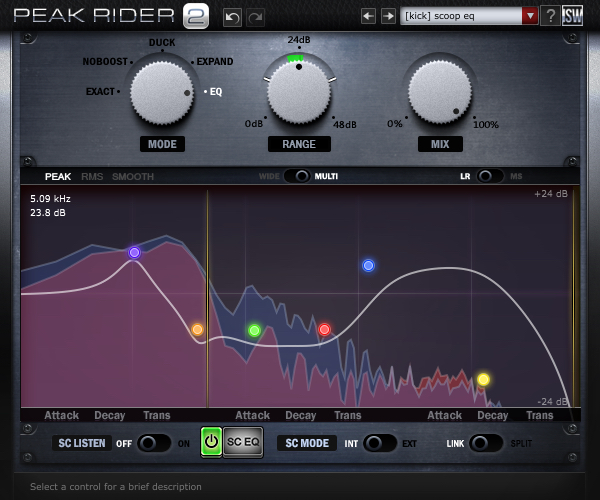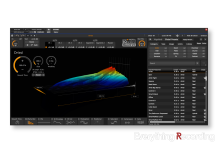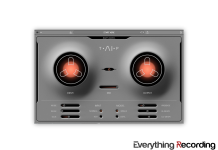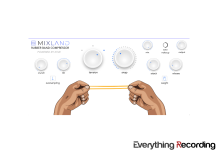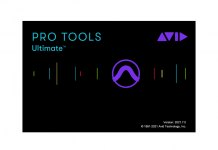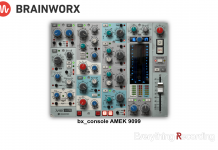Dynamics can be used to tame transient material but also can be used as a creative tool to shape tone and create movement. Impact Soundworks have updated their transient side-chain shaping tool with PEAK RIDER 2.
FULTON, MD, USA: audio software creator Impact Soundworks is proud to announce availability of PEAK RIDER 2 — advancing the creative scope of its popular PEAK RIDER release as a dynamic processing plug-in for any AU-, AAX-, RTAS-, and VST-compatible DAW (Digital Audio Workstation) host supporting sidechaining — as of April 13…
As an advanced sidechain dynamic processor that is as powerful as it is unique, PEAK RIDER 2 can be used to precisely match the dynamics of one signal to another, subtract or invert these peaks, closely follow the level of a generated tone, or equalise a signal while retaining the exact dynamic characteristics. Creatively, it can also be used for powerful transient designing, tight drum gating, dynamic retention across distortion or other effects, reshaping stereo imaging, and much more besides.
Better still, it includes a notable number of improvements above and beyond its popular predecessor — Pro Tools compatibility courtesy of AAX and RTAS plug-in format support should surely pique interest. But beyond that, the all-new EQ mode is incontestably worth PEAK RIDER 2’s enticing entrance fee as a productive processing system allowing up to 12 discrete parametric EQ bands to be simultaneously initiated. In this mode, custom and surgical equalisation can be applied to any audio signal while simultaneously maintaining the ‘dry’ signal volume. Now, even with steep cuts and boosts, a heavily-equalised track will still fit in the mix.
Making the most of PEAK RIDER 2 and its now-five-MODE operation assumes an appreciation of its concepts. The plug-in makes use of a sidechain input — a copy of the main input, an entirely different signal, or an internally-generated synth or noise tone. This sidechain is analysed and an continuous envelope is created in realtime; the same is done with the main input signal. These two envelopes can then be matched, combined, and subtracted for a wide variety of useful mix and sound design applications. Each envelope can also be split into multiple bands and detected using algorithms for PEAK — realtime, fast peak meter-style envelopes; RMS (Root Mean Square) — realtime, smooth envelopes; or SMOOTH — smooth, look-ahead, windowed-average envelopes; stereo LR (left-right) or MS (mid/side); and tweaked on a per-band basis.
Envelope usage is selected via the MODE knob. Choose from EXACT (matches the main envelope to the sidechain envelope), NOBOOST (matches the main envelope to the sidechain envelope — attenuation only), DUCK (subtracts or adds the sidechain envelope to the main envelope), EXPAND (expands the dynamics or the main envelope with the sidechain envelope), and, now, EQ (matches an equalised version of the main envelope to an unprocessed main envelope).
Elsewhere, PEAK RIDER 2 improvements include smoother parameter automation; informative GUI (Graphical User Interface) metering; SC Input Processor (process the input sidechain signal with panning, volume, filtering, and EQ, and also replace the signal with signal generators directly before being processed by any other dynamic modes); SC Signal Generators (Off, Tone, Pink); overhauled RMS algorithm; new presets; Undo/Redo buttons (PEAK RIDER 2 remembers each control changed while open); Next/Previous preset buttons; and updated registration hardware encoding.
Endless creative possibilities are available to production-savvy PEAK RIDER 2 explorers. Examples of matching the dynamics of one track to another at a basic level, even, encompass matching an ambient room mic to a close mic, tightening the reverb tail; matching time-aligned harmony vocals to a main vocal, syncing the volume of all vocal tracks; matching saturated drums to the unprocessed track, preserving dynamics with even extreme processing; matching a static synth to any rhythmic track to create new life and motion; matching a live bass to the mid frequencies of a drum kit so the bass and snare always hit together… to try is to buy, so why not download the free demo version today?
For more in-depth information, including several superb-sounding audio demos, please visit the dedicated PEAK RIDER 2 webpage here: https://impactsoundworks.com/product/peak-rider-2
Watch Impact Soundworks Lead Developer Andrew Aversa’s PEAK RIDER 2 video walkthrough here: https://youtu.be/6BSW2Ez7eNk



